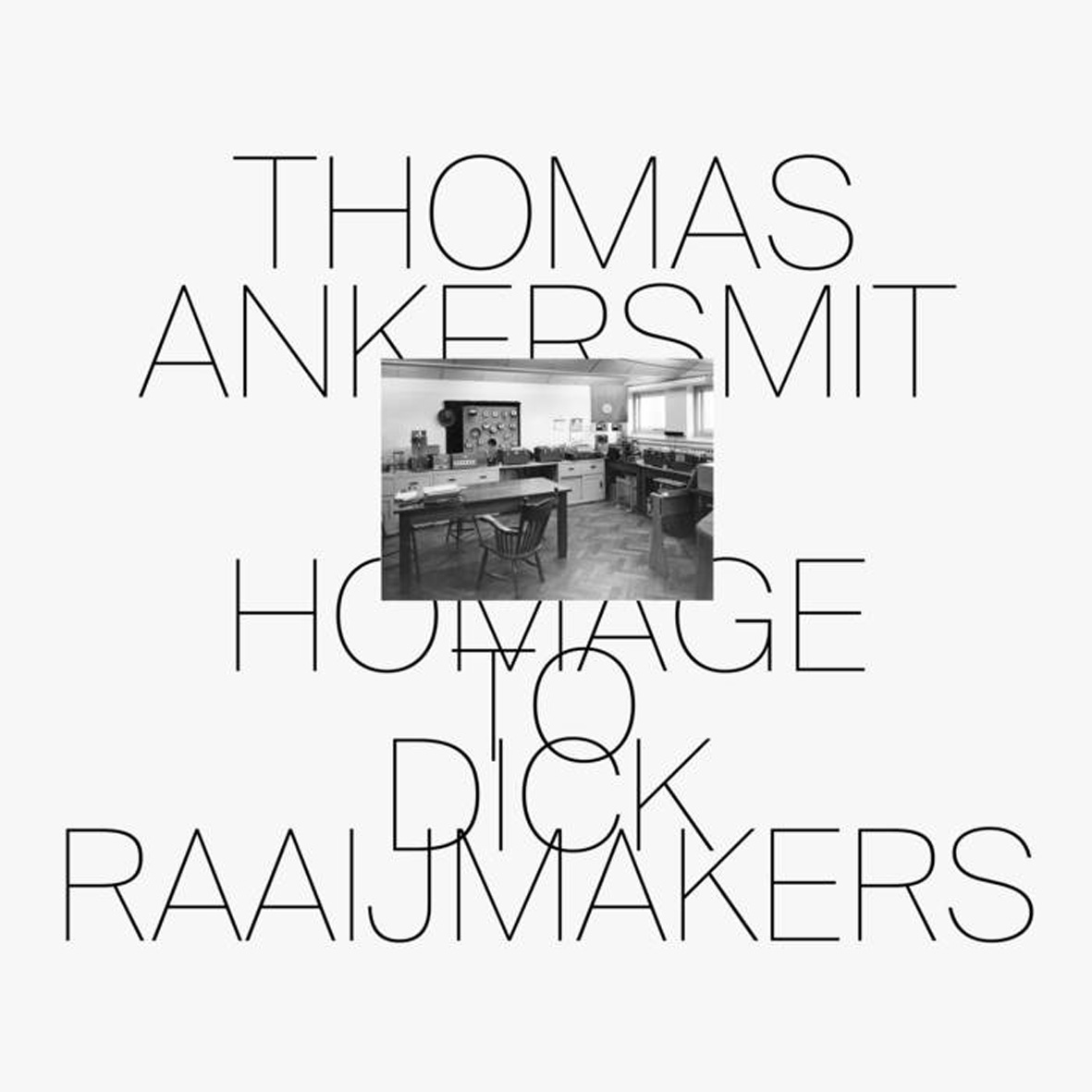Thomas Ankersmit, "Homage to Dick Raaijmakers"

I suspect I am far from alone in being unfamiliar with the music of Dutch composer Dick Raaijmakers, as there is not a hell of a lot of electronic music from the '18 and early '60s that has aged well. In his time, however, he was an important and pioneering figure in that milieu, performing significant electro-acoustic research and co-founding STEIM. He was also a thoughtful and inventive theorist and his ideas have proven to be a bit more timeless than his recordings. For this piece, originally commissioned by Sonic Acts, Thomas Ankersmit worked with similar tools to those that were available to Raaijmakers, but the album's true raison d'être is the exploration of holophonic sound fields. Wielding frequencies with scalpel-like precision, Ankersmit is able to trick the inner ear into conjuring new sounds that do not actually exist on the recording, transforming and evolving as the listener's spatial relationship to the speakers changes. It is a very neat trick, obviously, at times feeling like the album has physically burrowed directly into my head and started aggressively rearranging things. Ankersmit definitely would have been burned as a witch if this album had been made in earlier times.
One recurring thing that I have noticed with albums designed to trigger aural hallucinations is that the hallucinations are never, ever pretty ones like trails of shimmering colors.Rather, they tend to be far more on the infernal side of the equation, evoking something somewhere between an uneasy sense of vertigo and a nerve-jangling psychotic break from reality.Naturally, Ankersmit does not shy away from continuing that proud tradition, so it must be said that Homage to Dick Raaijmakers can be an incredibly dissonant and challenging bit of sound art during its synapse-frying crescendos.In the right hands, a modular synthesizer and some sine wave generators can be every bit as brutal as the most howling white noise assault.Unlike a harsh noise album, however, Homage has an extremely nuanced and enigmatic trajectory, seamlessly drifting from crackling, humming, and buzzing stasis into vividly textured vistas of eerie beauty or eruptions of harrowing dissonance.As such, this album feels like floating through a lysergic electromagnetic cloud that unexpectedly blossoms into one otherworldly set piece after another.The first and most beautiful such moment occurs rather early on, as a motif that sounds like an undulating chorus of malfunctioning short-wave radios dissipates into erratic sputtering, then unexpectedly re-coheres into haunting and tormented-sounding sonar pings in a gathering storm of static.It is quite a ghostly and weirdly lovely passage, but it is an elusively short-lived one destined never to repeat.
Instead, the piece morphs into a surreal miasma of electronic beeps and smeared synth tones that seems to achieve the piece's first significant holophonic moment, feeling like the air around me has become kind of a living and claustrophobia-inducing fog.After that, the album seems to plunge into the ocean's depths for a while, settling into a deep, submerged-sounding throb ravaged by bursts of electrical interference and violently shifting tectonic plates.At its peak, the cacophony is not unlike Merzbow, as Ankersmit gamely unleashes a howling onslaught of searing and splattering destruction.Unlike Merzbow, however, that caustic blizzard is actually a comparatively more listenable passage that eventually gives way to something far more bizarre and uncomfortable.It is fascinating how the blunt force of the piece has almost an inverse relationship to its heaviness, as the oscillating swirl of deep drones that follows feels like it is bending and warping reality in a sickly and unnerving way.After that, the album only grows stranger, dissolving into a brief void of sustained whines and the illusion of skipping, mangled tapes of field recordings (and possibly some kind of large, psychedelic owl).That, of course, is the calm before the storm, leading into an unhinged and buzzing crescendo of sanity-eroding whines.Its power is weirdly sneaky and cumulative, as it feels like I am surrounded by high-tension power lines that all seem to be emitting similar frequencies…but not quite the same frequency, resulting in a relentless and inescapable cloud of oscillating, dissonant harmonies that lasts for an uncomfortably long time.In some ways, it definitely feels like an endurance test, but it also feels like the air itself is shivering and alive and the sensations subtly shift as I move and tilt my head.In fact, it almost becomes meditative once I start to become numb enough to the dissonance to appreciate the spectral layering.
Obviously, such passages can be quite a rough ride and Homage is not particularly conducive to passive, casual, or frequent listening, but I genuinely appreciate how Ankersmit seems to revel in the more uncomfortable passages.Genuinely experimental sound art should hurt a bit if it is done right and Ankersmit does it exactly right.I am actually surprised at how rare albums in this vein seem to be, as previous generations took care of all the research needed to weaponize frequency manipulation, yet virtually no one seems to make use of their findings.And those that do seem like goddamn sorcerers.I grasp that psychoacoustics is a cerebral and complex field, but understanding it essentially adds an entirely new dimension to sound and it is an extremely cool one (not at all like the difference between 2D and 3D film).On a related note, it would be very easy for an album in this vein to turn out quite bloodless and academic-sounding in the wrong hands, so I am also impressed with how skillfully that peril is avoided here.There are certainly some aesthetic nods to early electronic music, as Ankersmit adapted Raaijmakers approach of treating music as more of a "weather system" than a structure of melodies and harmonies, but the palpable aural phantasms that he conjures up are very compelling, very visceral, and very contemporary.



